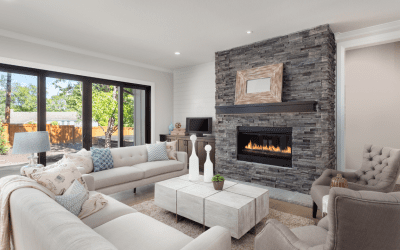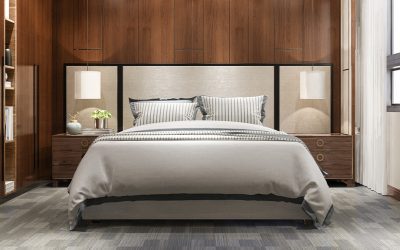In today’s fast-paced world, the kitchen has become the heart of the home. It is not just a place for cooking, but also a space for family gatherings, children’s activities, and everyday life. To meet the demands of a busy household, many homeowners are turning to modular kitchen designs. These versatile and adaptable layouts offer a range of benefits that make them perfect for families with children.
Understanding the Concept of Modular Kitchens
Modular kitchens are based on the concept of prefabrication, where different components are manufactured in a factory and then assembled on-site. This means that every element of the kitchen, from the cabinets to the countertops, is designed to fit together seamlessly. The result is a highly efficient and functional space that can be customized to suit individual needs.
The Basics of Modular Kitchen Design
Modular kitchens typically consist of standardized units, known as modules, which can be arranged in various configurations. These modules can include base cabinets, wall cabinets, tall units, and specialty units such as corner cabinets or pull-out pantries. The key advantage of modular design is its flexibility – homeowners can mix and match different modules to create a layout that works best for their family.
Benefits of Choosing a Modular Kitchen

There are several benefits to choosing a modular kitchen for your busy household. Firstly, modular kitchens offer plenty of storage options, ensuring that every item has its place. This is particularly important for families with children, as it helps to keep the kitchen organized and clutter-free.
Secondly, modular kitchens are highly durable and easy to maintain. The materials used, such as high-quality plywood or MDF, are designed to withstand daily wear and tear. Finally, modular kitchens are versatile and can be adapted over time.
As your family’s needs change, you can easily add or remove modules to accommodate new requirements.
Adapting Modular Designs for Family Needs
When designing a family-friendly kitchen, it is important to consider the specific needs of your household. This involves incorporating features that prioritize safety and maximize space for family activities.
Creating a kitchen that is both functional and safe for the whole family requires careful planning and consideration. By incorporating child-safe features and maximizing space for family activities, you can create a kitchen that not only meets your family’s needs but also enhances the overall experience of spending time together.
Incorporating Child-Safe Features
Safety is paramount in a family-friendly kitchen. When choosing modular elements, opt for child-safe hardware, such as soft-close hinges and drawer latches. These features not only prevent little fingers from getting caught but also provide peace of mind for parents.
Additionally, installing anti-tip devices on freestanding appliances is crucial to prevent accidents that could potentially harm children. By securing these appliances to the wall, you can minimize the risk of them toppling over.
Another important aspect of creating a child-safe kitchen is ensuring that sharp corners are rounded. Children are naturally curious and prone to accidents, so by rounding the edges of countertops and cabinets, you can reduce the risk of injuries.
It is also essential to cover electrical outlets to prevent children from inserting objects into them. Outlet covers are inexpensive and easy to install, providing an extra layer of safety.
Maximizing Space for Family Activities
With a busy household, it’s important to make the most of your kitchen space. One way to achieve this is by incorporating a multi-functional island. Not only does an island provide additional counter space for meal preparation, but it can also serve as a place for children to do their homework or engage in other activities while still being a part of the family’s daily routines.
By adding stools or chairs to the island, you create a designated area where everyone can gather and interact.Utilizing wall-mounted hooks or racks is another effective way to maximize space in a family-friendly kitchen.
By hanging frequently used utensils, pots, and pans, you free up valuable cabinet space, making it easier to access and organize kitchen essentials. This not only improves efficiency but also encourages family members to participate in meal preparation and cleanup.
Furthermore, consider incorporating a designated area for a family calendar or message board. This can be a central hub for organizing schedules, meal planning, and leaving notes for one another. By having a dedicated space for these activities, you can streamline communication and keep everyone on the same page.
By optimizing your kitchen layout and incorporating these child-safe features and space-maximizing strategies, you can create a family-friendly kitchen that promotes safety, functionality, and quality time spent together. Whether it’s cooking, doing homework, or simply gathering for a meal, your kitchen can become the heart of your home, where cherished memories are made.
Essential Elements of a Family-Friendly Kitchen
When designing a family-friendly kitchen, it is essential to focus on storage solutions and selecting durable and easy-to-clean materials. A well-designed kitchen not only enhances the functionality of the space but also creates a warm and inviting environment for the whole family to enjoy.
Storage Solutions for a Busy Household

A family-friendly kitchen requires ample storage to accommodate all the necessary items. Invest in modular cabinets with adjustable shelves and pull-out drawers to optimize storage capacity. This will allow you to customize the space according to your specific needs, whether it’s storing pots and pans, small appliances, or a collection of spices and condiments.
Consider adding a walk-in pantry or a separate storage area for bulk items and small appliances. Having a designated space for these items will not only keep your kitchen organized but also make it easier to find what you need when preparing meals for your family.
In addition to traditional cabinetry, make use of vertical space by installing overhead cabinets or open shelves. This provides an opportunity to display cookbooks, decorative items, or even your children’s artwork.
Not only does this add a personal touch to your kitchen, but it also encourages creativity and a sense of pride in your little ones.
Choosing Durable and Easy-to-Clean Materials
When it comes to busy households, durability and ease of cleaning are essential factors to consider. Opt for materials such as quartz or granite countertops, as they are resistant to scratches and stains.
These surfaces can withstand the daily wear and tear of a family kitchen, ensuring that your countertops remain beautiful for years to come. Choose cabinets made from waterproof materials, such as marine-grade plywood or PVC, to prevent damage from spills or moisture.
These materials are not only durable but also easy to clean, allowing you to quickly wipe away any messes or spills that may occur during meal preparation or family gatherings.
Similarly, opt for flooring options like ceramic tiles or vinyl, which are both durable and easy to maintain. These materials are resistant to scratches, stains, and moisture, making them ideal for a family-friendly kitchen.
Additionally, they come in a variety of colors and patterns, allowing you to choose a design that complements your overall kitchen aesthetic. When designing a family-friendly kitchen, it is important to consider the needs and preferences of your family members.
By incorporating ample storage solutions and selecting durable and easy-to-clean materials, you can create a kitchen that not only meets your functional requirements but also enhances the overall experience of spending time together as a family.
Before embarking on your family-friendly kitchen project, take the time to assess your family’s needs and work with kitchen design professionals to create a functional and practical space.
Discover a range of creative ideas that align with the modular design concept for small homes by checking out our blog at Urbun Drreams: 10 Budget-Friendly Interior Design Ideas for Small Homes, offering a wealth of tips and inspiration.
Assessing Your Family’s Needs
Consider your family’s lifestyle and habits when planning your kitchen layout. Are you a frequent entertainer? Do you have young children who need extra supervision? Are you an avid cook who requires ample counter space? By answering these questions, you can determine the key elements that should be included in your kitchen design.
Working with Kitchen Design Professionals
Collaborating with kitchen design professionals can help bring your vision to life. They have the expertise to optimize your kitchen layout and recommend suitable materials and finishes. They can also provide valuable insights on trends and innovative solutions that will make your family-friendly kitchen both functional and aesthetically pleasing.
Maintaining Your Family-Friendly Kitchen

Maintaining a family-friendly kitchen is essential for its longevity and continued functionality.
Regular Cleaning and Maintenance Tips
Establish a cleaning routine to keep your kitchen looking its best. Regularly wipe down surfaces, clean appliances, and sanitize areas prone to bacteria, such as cutting boards or sink areas. Remember to check for any signs of wear and tear, such as loose handles or hinges, and address them promptly to prevent further damage.
Updating and Upgrading Your Kitchen Over Time
As your family’s needs evolve, it’s important to update and upgrade your kitchen. Consider adding new modules or appliances to enhance efficiency or make use of smart technology to streamline processes. By staying abreast of the latest innovations, you can ensure that your family-friendly kitchen remains adaptable and functional for years to come.
In conclusion, a family-friendly kitchen requires careful planning and consideration of the specific needs of a busy household. Modular kitchen designs offer a range of benefits that make them ideal for families with children. By understanding the concept of modular kitchens, adapting designs for family needs, and incorporating essential elements, you can create a functional and practical space.
Additionally, proper planning, maintenance, and periodic upgrades will ensure the longevity and adaptability of your family-friendly kitchen. So why wait? Start transforming your kitchen into an inviting and accommodating space for your loved ones today!
FAQs-
1. How do modular designs benefit a busy household’s kitchen?
- Modular designs offer adaptability, enabling easy customization, quick installation, and efficient use of space, which is ideal for a busy household where functionality and flexibility are key.
2. Are modular kitchens cost-effective?
- Generally, modular kitchens can be cost-effective as they are made using standardized components, reducing construction time and labor costs. However, the overall cost may vary based on materials and customization.
.3. Can modular designs accommodate various kitchen sizes?
- Yes, modular designs are highly versatile and can be tailored to fit any kitchen size, from compact spaces to larger areas, allowing for efficient utilization of available rooms.
4. How easy is it to clean and maintain a modular kitchen?
- One of the advantages of modular kitchens is their easy-to-clean nature. The surfaces are typically smooth and easily accessible, simplifying maintenance.
5. Are there limitations in design choices with modular kitchens?
- While there are pre-set modules, there’s still ample room for creativity. Various styles, colors, and finishes can be combined to create a personalized kitchen that suits your preferences.
6. Can existing kitchens be transformed into modular designs?
- Yes, existing kitchens can be transformed into modular designs by incorporating modular units or components, adapting the space to create a more organized and functional layout.





0 Comments